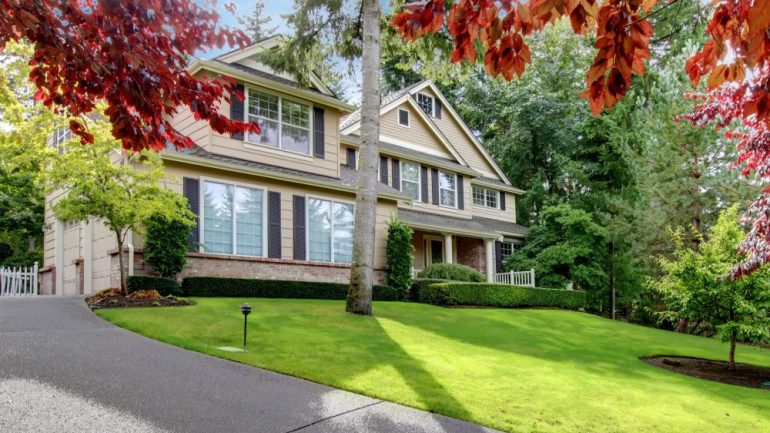Energy efficient landscaping can play a vital role in both saving energy and slashing the price you pay for it. Planting the right plants in the right places can save up to 25 percent of the energy a home would typically use. Read on to learn how to save big.
Know your zone
The climate where you live in the U.S. should affect how you choose and place landscape plants. The U.S. Department of Energy has divided the country into four broad zones and gives tips on how to landscape depending on where you live.
Tree choices that manage the sun
Trees planted so that they screen or admit sunlight to your house are a fundamental part of energy efficient landscaping.
During summer, the sun is more directly overhead, casting more of its heat energy on your house. In winter, the sun moves toward the southern horizon, shining less directly and thus bringing less warming heat. Whether your home is in the northern or southern United States also affects how much of the sun’s radiant heat hits your home.
Tree placement should be governed by these principles. Tall deciduous shade trees such as maples shield houses from the hot sun in summer but shed their leaves for the winter, allowing the sun to warm the house during frosty months. Trees should be planted close enough to cast shade, but not so close that roots and branches can threaten the house. Position shade trees as well as bushes to shield windows, which admit the sun’s heat.
If you can’t plant a strong shade tree to keep sun off the side of a house, tall shrubs or a trellis with climbing vines can serve the same purpose.
Energy efficient landscaping windbreaks
Trees can also play a key role in energy efficient landscaping by screening against wind. Evergreen trees hold their foliage year-round. If you live in a chilly northern clime, plant evergreen trees or tall shrubs along the northern, eastern and western sides of your home to deflect winter winds. Don’t plant them right beside the house, but at a distance of about double the height the tree will reach when mature.
Native to the area
For all vegetation, seek to use plants native to the area. These will thrive in your local climate conditions and will have adapted to the availability of water in the region. Native plants ensure your landscape is water-wise as well as energy efficient.
Related – Cool Coverings: Screening an Outdoor Air-Conditioner Unit


